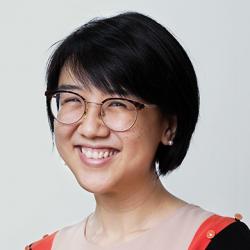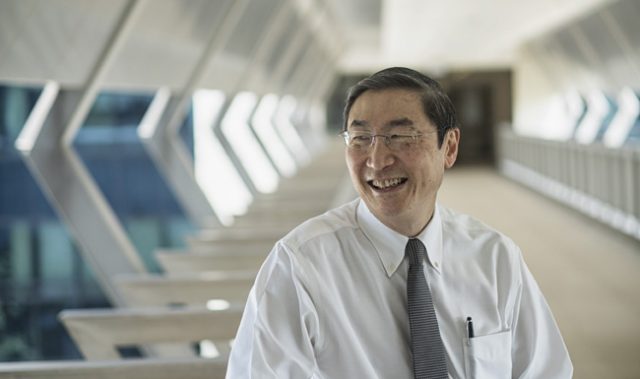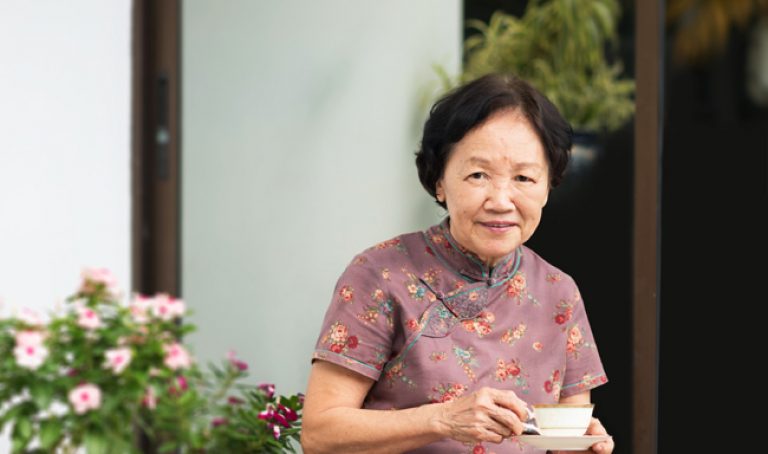
AsianScientist (Jan. 28, 2016) – Female researchers make up 27 percent of all researchers in Singapore today, a figure close to the global average of 30 percent. While this puts Singapore ahead of Japan and South Korea (13 percent and 15 percent respectively), it is still far from parity and lags behind Malaysia (37 percent) and the Philippines (52 percent).
One of the factors contributing to the imbalance is that girls have historically been given fewer educational opportunities. Even when they were allowed to go to school, science was not deemed a suitable subject. Such was the case for Gloria Lim, a retired professor in botany at the National University of Singapore (NUS). Although she had no background in science, having come from a girls’ school which did not teach science at all, she nonetheless found her way into the science faculty, joining the University of Malaya (UM) the year it was founded, 1949.
“When I applied to the university, they first gave me a course in the arts faculty,” Professor Lim recounts. “My mother said, ‘No, if you’re going to do arts you might as well go to teacher training straight away.’ So I appealed to the university and they put me in science. And lo and behold, in my first year I was like a sponge, absorbing all the scientific things around me.”
Professor Lim went on to become one of two inaugural honours graduates from the department of botany. Subsequently, she served as the first—and only—female dean of science, as well as the first female member of the Public Service Commission (PSC), roles for which she was awarded the Public Service Star in 1993 and the title of distinguished science alumni in 2005 by the NUS faculty of science.
Mad about mycology
As much as she enjoyed and excelled at science, a life in academia was then seen as an unconventional career path for women. Therefore, in addition to completing a master’s in plant pathology, she hedged her bets by doing a diploma in education, at the suggestion of her mother.
She was then posted to Raffles Girls’ School. But the university’s botany department also wanted her.
“So I would teach in the morning and rush back to the university in the afternoons—I had more energy in my younger days!” she shares, laughing.
Eventually, H. B. Gilliland, the head of botany, submitted Professor Lim’s name for the Inter-University Council Fellowship, which allowed her to complete her PhD at the University of London. Upon her return to Singapore, she continued her work on fungi, establishing a name for herself as a mycologist.
For Professor Lim, living in the tropical climate of Singapore is a mycologist’s dream—the humid environment supports a diverse array of fungi, as anyone who has ever left out a slice of bread would know firsthand.
Over the course of her career, she painstakingly built up a fungal collection, maintaining a unique repository of the region’s under-studied fungal species. Unfortunately, when the zoology and botany departments were later merged after Professor Lim’s retirement, there was a shift in emphasis towards zoology, perhaps because fungi was generally then seen more as a problem than a resource.
“Yes, they can cause disease, but they can also heal you,” Professor Lim stresses. “For example, important drugs like penicillin were first found in fungi.”
The new department discarded her fungal collection, which is ironic, considering that as eukaryotes or cells with nuclei, fungi are actually more closely related to animals than plants, despite their plant-like appearance.
“The botanists left the department one by one,” she says.
Despite funding constraints, Professor Lim over the years managed to publish hundreds of research papers, with the help of her students and through experience gained from sabbatical stints overseas.
Apart from authoring several books on mycology, she has also consulted for both the private and public sectors—serving on the scientific advisory board of MycoBiotech, a company focussed on medicinal mushrooms, and advising the Ministry of Defence when they had mould problems in their underground storage bunkers.
Navigating political turmoil
Professor Lim’s ability to “cut according to the cloth given” also served her well during two stints as dean of the University of Singapore’s science faculty—first in 1973-77, then for a period in 1980. Right from the start, certain colleagues questioned her suitability for the role.
There were other problems at the student level, too.
“I remember being stuck at the top floor of the Bukit Timah campus during a student riot protesting the arrest of Tan Wah Piow,” Professor Lim says. “It was an exciting time for me—I learnt a lot of lessons on how to cope with situations of that kind.”
[In 1974, Mr Tan, president of the University of Singapore’s Students’ Union, was charged, convicted and sentenced to one year in prison for unlawful assembly and rioting, after being accused of instigating shipyard workers to agitate against their employers. He moved to London in 1976 and has been living there in exile ever since.]
Professor Lim’s second term was much shorter. Shortly after she was re-elected as dean of the science faculty, the University of Singapore and Nanyang University merged. She then stepped down in favour of Koh Lip Lin, the Nanyang dean and a former member of parliament.
It’s (still) a man’s world
In 1982, Professor Lim was invited to join PSC, a body tasked with recruiting and managing civil service talent. Approached for her extensive experience in the university, particularly in managing tenure committees, Professor Lim served PSC for 14 years, bringing a different perspective to their selection policies.
“One of the things I asked for was more female physical education (PE) teachers; they had never sent a woman to do a scholarship for PE before,” Professor Lim says.
When Professor Lim stepped down in 1996, PSC again became a male dominion. That changed in 2009, when Chua Sock Koong, CEO of Singtel Group, and Lily Kong, vice-president of NUS, joined it. Despite these and other accomplishments by women in Singapore, Professor Lim is sceptical about the progression of gender diversity in the country. Even today, she notes, the fellows of the Singapore National Academy of Science are all male.
“I’ve come to the stage where I feel that there will always be a gender imbalance in Singapore,” Professor Lim contends. “I’ve seen it in my own life—50 years and still no change. I noticed that all the other retired deans were given appointments. When I retired, I was never offered any opening.
It might never have crossed their minds, or they thought I was incapable. Either way, the difference was stark, at least to me.”
Called out of retirement
Although some glass ceilings have been harder to crack, the field of education has been much more welcoming of Professor Lim and many other women before her. In 1991, she was appointed founding director of the National Institute of Education (NIE)—thereby helping to transform the Institute of Education (IE) into a fully-fledged degree-awarding institution.
“My role was very clear: to raise the IE to a university standard,” she says. “Going in as a sort of outsider, I could sense a kind of resentment. I knew I had to tread carefully and yet at the same time be firm in implementing the changes required.”
By the time she stepped down in 1994, NIE was offering not only four-year bachelor’s degrees, but also master’s and PhD qualifications.
Professor Lim regards the students she has taught, many of whom have already retired, as her most important legacy. Nevertheless, she remains concerned that too few Singaporeans—male or female—are pursuing science careers.
Although Singapore has achieved economic success, she says, there is still much to do. Complacency is dangerous, partly because resource allocation remains a challenge.
“We have to be careful about the areas of research we go into, because money used improperly can be bad for us,” she cautions. “We mustn’t keep thinking of only doing applied research because we need basic research as our foundation.
Buildings without strong foundations topple over, no matter how pretty they may look above ground. It’s also crucial that we develop our own people and put them in leadership positions, people who understand our history and context.”
Perhaps some of these roles might even be filled by women, she says, with a twinkle in her eye.
This feature is part of a series of 25 profiles, first published as Singapore’s Scientific Pioneers. Click here to read the rest of the articles in this series.
———
Copyright: Asian Scientist Magazine; Photo: Bryan van der Beek.
Disclaimer: This article does not necessarily reflect the views of AsianScientist or its staff.













